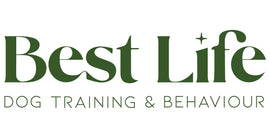A crate is arguably one of the most important items that you can provide for your dog. The list of benefits attributed to crate training is seemingly endless and often these benefits are individual to each dog and their specific needs and personalities. It is my opinion that all dogs can benefit in some way from the process of crate training.
Top Benefits:
- The likelihood that your dog will need to be crated at the vet at some point in their lifetime is HIGH. Why not reduce their stress in these situations by preparing them for it!
- Toilet Training! An appropriately sized crate is a new puppy owner’s best friend!
- A crate, when utilised correctly, provides dogs with a safe space to call their own. This can benefit multi dog households, especially when there are dogs of different ages/sizes/energy levels included!
- The safe space created by a crate can be invaluable in the process of preventing and rehabilitating separation anxiety!
When crate training is done effectively, dogs should associate their crate with a calm, relaxed state of mind. Wipe those images of sad puppy dogs, trying to claw their way out of cages, from your brain! Dogs are den animals and providing them with an appropriately sized crate, taps into their innate desire for enclosed spaces in which to rest. We never want to just lock a dog straight into a crate, I am about to provide a framework for training your dog/puppy to understand and enjoy their crates! The key rule here is that crates are never to be used for punishment; We always want a positive association from our dog!
The crate you choose for your dog should allow them to stand up comfortably and to turn around easily, but that’s it! The mistake often made is that we humanise our crate purchases and want to give them the deluxe penthouse suite, when in canine reality, a crate that is too large loses its den like feel. For puppies, it can be smart to buy a crate suited to their adult size and then barricade them into a section that is appropriate for their current size. Many crate manufacturers provide easy to use crate separators. This is important to the toilet training process.
Now for the good stuff, how do we start the crate training process? The process is relatively simple and the same whether your dog is a puppy or not. What is important to remember is that every dog is an individual and we have to work at their pace; patience is the key!
- Once you have your crate, place it in a position where the dog is likely to use it. For adult dogs this may be simply picking up their existing bed and placing it inside the crate in the same spot. For a puppy we want to choose a place where the dog does not feel excluded. This may not be where the crate “lives” forever, but its where we start!
- Start by feeding meals inside the crate. At first you will leave the door open, maybe just for a few days, but other dogs may be more wary and take longer to feel comfortable. Its also a good idea to give chews/enrichment items in the same way.
- Next you will start closing the door while they eat. Initially you will stay there and open the door as soon as they finish eating. Eventually you will increase the amount of time that they spend in the crate after finishing by small increments (AT THEIR PACE) and leave them alone for increasing periods too.
*At this point it is important to revisit the point I made previously about dogs being individuals. We need to teach our dogs that complaining is not a viable way of getting let out of the crate, so we need to NEVER let our dogs out while they aren’t calm and quiet… However, we also do not want our dogs to start associating the crate with restriction or overstimulation. The way we achieve both of these goals simultaneously is by making sure we work slow and steady. Ideally, we do not want our dogs to ever feel the need to complain, because we’ve gradually built up the amount of time they are comfortable in their crate for.
If we do push too far one day though, it is important that our dogs learn to calm themselves before being released; that means waiting them out. Once they are again calm, we can acknowledge and release them.
- Continue with gradually increasing the amount of time your dog spends inside the crate. It is a good idea, especially for young dogs or dogs new to the process to leave them with something to entertain themselves with calmly. Something to chew or a stuffed kong etc.
Dogs should not be crated all day every day if you work 9-5. It is perfectly fine, if not recommended, for them to spend a few hours a day in their crate though. As always, we should be ensuring we meet our dog’s physical and metal needs, but it becomes particularly important if we expect them to hang out calmly in their crate.
If you require any assistance at all with the crate training process, please do not hesitate to contact Best Life Dog Training & Behaviour! We are experienced in helping owners to navigate the process with sensitive and/or tricky dogs.

